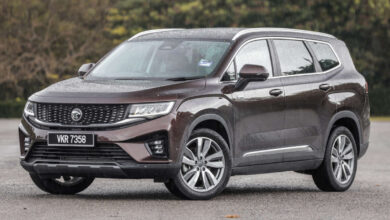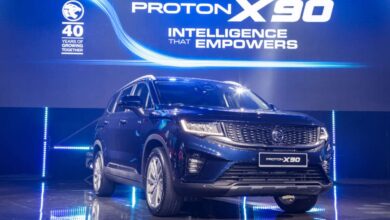The UAW Is Pulling Out All The Stops Against Detroit’s Big Three

Friends, the weekend is finally here. It’s September 1, 2023, and this is The Morning Shift — your daily roundup of the top automotive headlines from around the world, all in one convenient place. Here are all the important stories you need to know today.
1st Gear: United Auto Workers File Unfair Labor Practice Charges Against GM And Stellantis
Union negotiations are tough. I get it. But the UAW’s ongoing contract negotiations with Detroit’s Big Three seem to be tougher than most, as the workers ask for the same pay increases their bosses have seen in recent years. Now, the union is claiming that GM and Stellantis aren’t even bothering to bargain — and they’re claiming it in court. From Automotive News:
Separately, [UAW President Shawn] Fain said the UAW has filed unfair labor practices charges against General Motors and Stellantis, a tactic that rarely has been used during bargaining with the Detroit 3.Fain said the UAW had submitted complaints to the National Labor Relations Board saying the two automakers have not adequately responded to the union’s contract demands. The UAW’s contracts with the Detroit 3 expire Sept. 14.“GM and Stellantis’s willful refusal to bargain in good faith is not only insulting and counterproductive, it’s also illegal,” Fain said.The complaints, which are identical and provide little detail, allege that “during the past six months, the employer has violated the [Labor Relations] Act by refusing to bargain in good faith over mandatory subjects of bargaining including but not limited to wages and benefits.”
The eagle-eyed among you will notice that Ford didn’t get a ULP charge. That’s because the Blue Oval apparently is bargaining actively with the UAW — just not offering much. Still from Automotive News:
Ford’s proposed wage increase is below what the UAW is asking for, Fain said. Ford has offered to reduce the length of time it takes a new hire to receive top wages from eight years to six, while the UAW wants to eliminate the grow-in period entirely.
Additionally, Fain said Ford wants unlimited use of temporary workers, has refused to reinstitute cost-of-living wage adjustments, will not increase retiree pay and will not agree to the UAW’s demand for a program that that would give workers their normal pay during a layoff.
He said Ford wants to change the current profit-sharing formula, which pays workers $1 for every $1 million in pretax North America profits.
Under Ford’s proposed formula, Fain said, workers would have earned 21 percent less than they did in the past two years.
Don’t expect these negotiations to end any time soon. With the WGA, SAG-AFTRA, Starbucks, Teamsters, and more making up Hot Labor Summer, it’s not inconceivable that the UAW could head to the picket lines for an equally hot labor fall.
2nd Gear: The U.S. Government Is Pouring $12 Billion Into EV Manufacturing
Turns out, retooling all your factories from building ICE vehicles to building EVs is expensive. Constructing entirely new facilities to build batteries costs even more. There’s a problem here — automakers don’t like spending money, and will avoid it with all their might, but if someone doesn’t shell out for the EV transition then we’re all going to die. Thankfully, someone else is stepping in to shoulder the costs: You. From the Wall Street Journal:
The Energy Department said it is planning to provide up to $12 billion in funding for automakers to retrofit existing manufacturing facilities in the U.S. for the production of electric and hybrid vehicles.
Most of the funding, some $10 billion, will be allocated from an advanced-vehicle manufacturing program overseen by the department’s Loan Programs Office, Energy Secretary Jennifer Granholm said. The other $2 billion will come from funds allocated by last year’s Inflation Reduction Act.
The funds will help provide jobs in longstanding automaking communities as the auto industry transitions to electric vehicles, Granholm said. The Energy Department said it would favor projects that are likely to retain collective bargaining agreements and have high wages.
The department also plans to make $3.5 billion available for domestic battery manufacturing. Companies and the U.S. government have been shelling out billions of dollars to establish a North American supply chain for rechargeable battery materials as it races to catch up with China, which dominates the battery supply chain.
Thanks, reader! All those automakers decided that the fate of the world looks bad on their balance sheets, so we’re glad you stepped in with your tax dollars to fix everything instead. Phew.
3rd Gear: Hyundai And LG Are Putting An Extra $2 Billion Into Georgia Battery Plant
Of course, the major automakers aren’t spending nothing on the EV transition. Plenty of them are spending at least a few of their own dollars on modernizing their manufacturing facilities to better handle the 21st century. Take Hyundai, which — in partnership with LG — is reinvesting in U.S.-based battery manufacturing. From the Detroit News:
Hyundai Motor Group and LG Energy Solution said Thursday they will spend an additional $2 billion and hire an extra 400 workers to make batteries at the automaker’s sprawling U.S. electrical vehicle plant that’s under construction in Georgia.
The announcement by the South Korea-based companies — one a major automaker, the other a leading producer of lithium-ion batteries used to power electric vehicles — expands on a partnership they launched three months ago to produce batteries at the same site west of Savannah, where Hyundai plans to start EV production in 2025.
The news Thursday brings the companies’ total investment in the Georgia plant to more than $7.5 billion and the site’s overall planned workforce to 8,500.
Hyundai hasn’t said what the additional investment will go towards — higher output from the factory, faster scaling, or just really good decorations in the breakroom when it’s someone’s birthday on staff. Probably not the last one, but I’m not ruling it out entirely.
4th Gear: Korean Automaker Sales Keep Climbing
Hyundai is preparing itself for the future, but the company — alongside its siblings, Kia and Genesis — is already doing well. The three Korean automakers all saw sales rise in the U.S. for the month of August, though not all boats were lifted equally. From Automotive News:
U.S. light-vehicle sales rose again in August at Hyundai and Kia, helped by the highest industry inventory levels in two years and increasing incentives that helped offset higher interest rates for consumers.
…
Hyundai Motor America said U.S. sales during the month improved 1.1 percent to 65,046 vehicles while Kia America reported a gain of 9.2 percent to 72,147 vehicles.
Hyundai’s luxury brand Genesis said sales during August surged 27 percent to 6,453 vehicles.
The Hyundai Kona subcompact crossover led the way with a 71 percent gain to 5,777 deliveries. Santa Fe and Tucson both recorded double-digit hikes. Among decliners, the Elantra fell 21 percent and the Palisade slipped 26 percent.
…
Kia’s results were paced by surging sales of the Niro compact crossover with 3,896 deliveries and the Carnival minivan with 5,428. Kia Soul sales slipped 23 percent to 4,911 units.
Poor, poor Kia Soul. Have we, as a nation, lost our love for weird little boxy crossovers? Or are we simply mourning the loss of those hamsters from the early ad campaigns?
Reverse: And Then We Left It There, Undisturbed, And No One Ever Got Crunched Into A Paste In A Submarine About It
On The Radio: Speedy Ortiz – ‘Ghostwriter’
It’s the first of the month! Did you say your rabbits this morning? If not, Speedy Ortiz has you covered — their latest album, Rabbit Rabbit, dropped today. They’ve been killing it for a full decade now, and it doesn’t sound like they’ll be slowing down any time soon.




